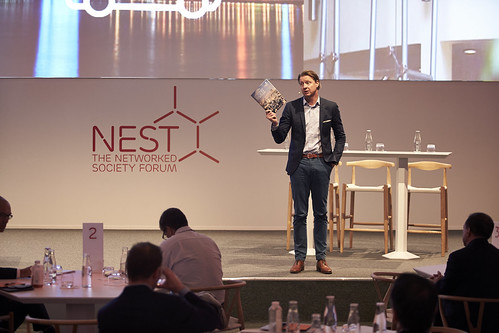Ericsson proposes sweeping program to reduce traffic congestion in Miami
Swedish multinational Ericsson plans to use its data and communications experience to help curb traffic congestion in Miami, Florida. The telecom giant announced a proposal during its annual event, NEST 2013, held this year in Miami Beach.
ICT to address traffic woes
Through its “Intelligent Transport Initiative,” Ericsson plans to use its advanced network of information communication technology (ICT) to tackle traffic-related problems in major cities, including Miami.
Miami ranks 12th in the Networked Society City Index, which ranks cities according to “their ability to transform ICT into social, economic, and environmental benefits.”
Ericsson has taken up this initiative as part of NEST’s theme this year, “Reinventing Urban Life.” According to a press release by the company, the motive behind such a proposal is “to enable creation of safe, sustainable and efficient transport systems in the market.”

Hans Vestberg, Ericsson’s president and CEO, at NEST 2013. Via Ericsson
Discussing the proposal, Hans Vestberg, Ericsson’s president and CEO, said that “…To solve systemic issues of traffic congestion, carbon emissions, trash collection, residential crowding, and more, collaboration is the only way we will bring workable solutions to cities.”
Over the next year, the company plans to conduct research in areas like innovation, safety, and quality of service to better understand how Miami can provide customers with an intelligent transport system. The company will then propose actions to stimulate progress, eliminate inefficiencies, and generate new business.
Miami-Dade County had already looked at ICT as a way of addressing traffic congestion. As Angel Petisco, chief information officer of the county, says, “We in Miami Dade County have a traffic problem. We cannot necessarily widen our roads or build more.”
Projects to reduce traffic congestion in Miami
In Miami Dade County, officials are offering incentives to take public transportation, also collaborating with local businesses that offer deals and coupons to their customers who get around on public transport.
The city’s 911 system is also programmed to predict demand for emergency calls 90 days in advance, helping the fire department arrive at a scene on time and pull up a schematic of the building they have to enter.
Petisco is of the opinion that information about parking availability can stop drivers from cruising for parking, which will reduce carbon emissions. Predictive smartphone apps are in development to disperse parking information.
Category: Enforcement, Road safety, Traffic law, Trends

















